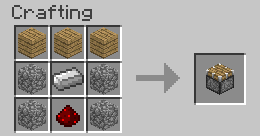

R4 DS Card is an emulator device that can be used to play homebrew games on the Nintendo DS and Nintendo DS Lite. It comes in the size of an original DS game cartridge and is inserted into the DS via the Slot-1 of the Nintendo DS console. There are many brands of DS card made by different manufacturers such as the R4, DSTT, EDGE DS and many others.1.2) DS card componentsFor a DS card to work, it will need three component: The DS card itself, a micro SD / SDHC card and the DS card firmware.The firmware is basically the software part of the system. It is a program that allows a DS card to run homebrew application on the Nintendo DS console.The DS card is basically the hardware part of the system. It contains the Integrated circuit (IC) and various other hardware component that allows the DS card the act as a physical adapter to interact with the Nintendo DS console.The micro SD is the memory of the system where the firmware and homebrew appication are stored. It is basically the RAM and hard disk space of the system. The micro SD can come in 2GB, 4GB, 8GB, 16GB and 32GB. Micro SD for 4GB and above are known as micro SDHC (Secure Digital High Capacity).1.3) Getting a DS card to workThe first step to get the DS card to work is to get the DS card firmware. This firmware may sometimes be provided in a disc but most likely nowadays to be available for download from the DS card manufacturers site or from the reseller site. The DS card firmware is usually in a .zip or a .rar file, which need to be unzipped (or unrar) using the WinZIP or WinRAR program. The next step is to transfer the unzipped DS card firmware and homebrew applications that you would want to play on the Nintendo DS console from the computer into the micro SD. To do this, you will need a USB-micro SD adapter. Insert the micro SD into the USB-micro SD adapter. Insert the USB-micro SD adapter into the USB port on the computer. The computer will now detect an external memory drive which is the micro SD. Drag and drop all the DS card firmware and homebrew application into the root directory of the micro SD. The transfer of the DS card firmware is now completed. Unplugged the micro SD from the computer.The micro SD can now be inserted into the micro SD slot on the DS card, which is usually located on the top corner of the DS card. The DS card is now a fully functioning system and can be inserted into the Nintendo DS or Nintendo DS Lite console. Turn on the power on the Nintendo console and the DS card is now working and the user can start playing homebrew appicaion that they have transfer onto the Nintendo DS console.1.4) DSi card A DSi card is similar to the DS card except it was created to work on the new Nintendo DSi console. DS cards can only work on the Nintedo DS and Nintendo DS Lite console. DSi card can work on all three Nintendo DS consoles (DS / DS Lite / DSi).2) What is an R4?2.1) IntroductionR4 is the most popular brand name for the DS card. There a 30+ brand of DS card that calls themselve R4. On NDS-Gear, we sell 2 out of 30+ of these R4 brands, the R4v2 (R4DS) and the R4 SDHC.2.2) R4v2 (R4DS)2.2.1) History of R4v2 (R4DS)The R4v2, also known as R4DS, is the original R4 brand DS card. R4DS stands for ‘Revolution for DS’. The R4DS is one of the first superior DS card on the market as it can automatically boot itself on the Nintendo DS console without the need a Pass. Me Device (type devices are inserted into the DS slot and trick the DS into allowing unsigned DS code to run from the GBA cartridge slot in full DS mode). This made the R4DS cheaper, superior and very popular compare to other DS card on the market when it was released in early 2007. It was considered to be one of the best DS card when it first came out in 2007. Because of its popularity, many other manufacturers start making clone copies of the R4DS and also naming their product ‘R4’, giving rise to the 30+ brands of R4. The R4 card change its name to R4v2 (Revolution for DS Version 2) when it release a non-spring loaded version of the R4 card in late 2007. This was to get rid of spring mechanism failure which was quite common in the R4DS. Now only the non-spring version R4v2 is sold on the market.2.2.2) R4v2 packageThe R4v2 package comes with the R4v2 DS card itself, a blue protective case to protect the R4v2 DS card, a USB-micro SD adapter and a disc which contains the R4v2 firmware. R4v2 firmware can also be downloaded from the manufacturer site. All this are contained inside a blackish green paper packaging box. The R4v2 package does not include the micro SD which must be purchase separately.2.2.3) Advantage of R4v2The R4v2 still have the fastest loading performance of any DS card on the market eventhough it was one of the earliest DS card released. The R4v2 also have many other functions which was created by the R4v2 development team and are now a standard in other DS card. These functions includes the ability to play mp3 music, watch videos and read e-book on the Nintendo DS console. Currently the R4v2 is also the cheapest DS card on the market. It is also quite a stable card and has a very low failure rate (less than 1%). Other R4 brands have a failure rate of 4-10% and the really bad ones can reach 20%.2.2.3) Drawback of the R4v2The R4v2 can only take micro SD with 2GB memory size or below. Newer DS cards can now take micro SD with memory size upto 32GB. The R4v2 also have some game compatibility issues whereas some of the best newer DS cards have 100% game compatibility.2.3) R4 SDHC2.3.1) History of R4 SDHCThe R4 SDHC is one of 30+ R4 brands that come after the R4v2. Unliked most of the other 30+ brands which are unreliable, unstable and rubbished, the R4 SDHC has proven to be a very good DS card. Some of the development team members of the original R4v2 is now working for the R4 SDHC developmental team.2.3.2) R4 SDHC packageVery similar to the R4v2. Comes with the R4 SDHC card itself, a blue protective case, a USB-micro SD adapter. Does not come with a disc containing the R4 SDHC firmware as the R4 SDHC manufacturer made it available to download online. Reason for this is because the firmware is constantly being updated and its easier to provide a download service. All this are contained inside a blackish green paper packaging box with the brand name R4 SDHC written on it. The R4 SDHC package does not include the micro SD which must be purchased separately.2.3.3) Advantage of R4 SDHCThe advantage of R4 SDHC is that it is able to take micro SDHC with memory of upto 32GB, hence its name. It also have 100% game compatibility and has all the standard functions available in the R4v2 such as the ability to play mp3 music, watch videos and read e-book on the Nintendo DS console. The R4 SDHC is also a very stable card with low failure rate (less than 1%). A good jake of all trade DS card.2.3.4) Drawbacks of R4 SDHCR4 cheat database is limited compare to the cheat database of the best DS brands on the market. Does not have some of the functions of newer DS cards.3) Solutions to common R4 Problems3.1) Fising the R4 ‘Loading…’ Screen ProblemProbably the most common problem with the R4DS Card, regardless of whether you are using the R4v2 or R4 SDHC, is the “Loading…” error. The majority of people assume that this is because their adapter is broken, and immediately panic or send their card back. However, this is not normally the case if you’ve bought a genuine product. The most common problem is that you have the wrong software for your R4 adapter. Visit our Software Download page for help recognising what kind of card you have, and links to software downloads for the R4v2 and R4 SDHC.3.1.1) Six Steps to Solve the “Loading” Problem3.1.1.1) Make sure you have downloaded the right software. For help with this, please visit our Downloads page here.3.1.1.2) Make sure the software is placed inside the root directory of your Micro-SD card – the ‘base’ or first directory of your Micro-SD card. What your Micro-SD card’s files should look like, can be seen below.3.1.1.3) Give your Micro-SD card a quick clean (a good blow or two, as the card contacts can be sensitive to dirt).3.1.1.4) For optimum performance, do not overload your Micro-SD card. The remainder of your Micro-SD card’s memory is needed to keep your card running in tip top shape. As a guide, we recommend filling your Micro-SD card to no more than 60% full. That means that for a 1GB card, we only recommend filling it up to 600MB full of applications and games. For a 2GB card, we recommend only filling it up to 1.2GB full,and so on.3.1.1.5) Make sure the Micro-SD is card pushed down completely into the DS adapter (ensure good contact between Micro-SD card and R4 adapter). In a very small minority of cases, the Micro-SD has to be pulled up a bit if the ‘click’ between the Micro-SD and the R4 card causes them to misalign. This is more common with the R4 SDHC than with the R4, but is nonetheless a non-issue.3.1.1.6) Reformat your Micro-SD to (FAT16/32) for optimal performance.3.1.1.7) Use only the following sizes of Micro-SD/ SDHC: 1, 2, 4, 8, 16, 24 and 32GB. The R4 SDHC is untested for Micro-SD cards above 32GB and problems are reported for 6GB micro SD. For the R4v2, only use 2GB Micro-SD cards or below, as higher capacity Micro-SDHC cards do not work.3.2) Fixing the ‘There is no DS Card Inserted’ Screen ProblemOne of the more uncommon error message which appears on the normal DS load page. It usually have the message that goes:”There is no DS card inserted” on the top line and “There is no game pak inserted” on the bottom line.In this case, the “There is no game pak inserted” is a pretty standard message as it relates to the slot 2 of the DS which is empty – DS cards/adapters do not use that slot these days. However, the “There is no DS card inserted” message is worrying. There is many reasons for this message, which can range from dirt / dust on the micro-SD card, corrupt micro-SD data, a faulty R4v2 card / micro-SD connector, or the more serious and worrying misalignment of the DS slot 1 connectors.The dirt/dust problem on the micro-SD card can be easily solved by giving the micro-SD a good blow or two. A corrupt micro-SD card’s data can be easily fixed by reformatting it to FAT16 or FAT32. A faulty R4v2 card and micro-SD should be exchanged with the retailer – only e-mail them after the first two options don’t appear to have worked, though, because about 99% of the time one of those will fix it.



